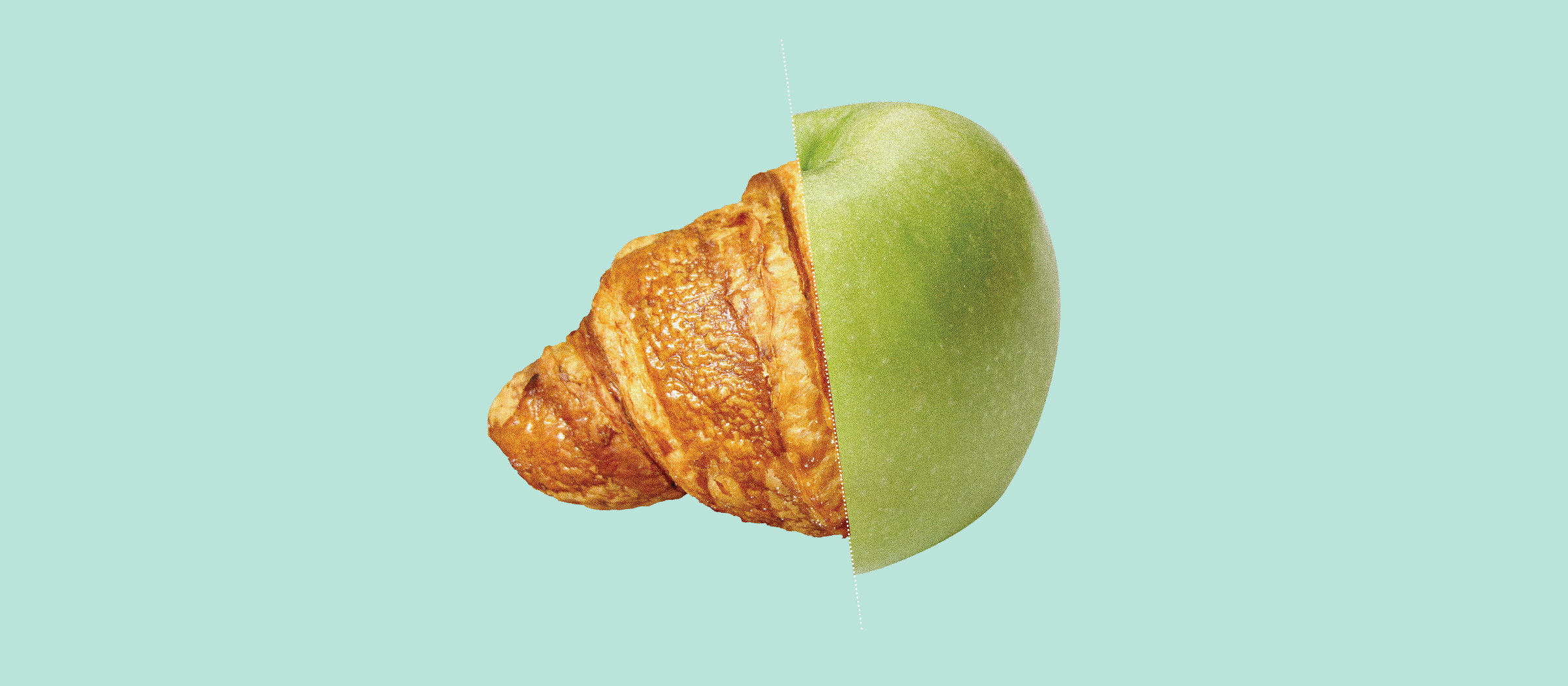The New Gastronome
Green or Golden?
What Neuroscience Tells Us About Our Food Choices?
by Elisabeth Wittich, May Siri
by Elisabeth Wittich, May Siri

Do you remember the last time you were really hungry? You probably went to the closest bar and chose a croissant, or maybe a sandwich. But why didn’t you choose the shiny green apple that was right next to them? The answer to that question is much more complex than you might think.
According to Raffaella Ida Rumiati, a researcher at the “Neuroscience and Society” laboratory of the International School of Advanced Studies, the factor responsible for our decisions is our subconscious. She spent one year of research, seeking to understand how our brain processes food cues and directs our food choices. The moment food is involved, our vision recognizes it and as a consequence, activates certain network areas in the brain. These areas, it has been found, are sensitive–both to a food’s caloric value and to its level of transformation. In order to better understand and cure eating disorders – a phenomenon born out of our current overwhelming food offerings – we must go deeper into the world of neuroscience.
“…products which are cooked, baked or fermented, are detected easier by the brain than natural products.”
How do we select food?
For instance, you probably chose your croissant over the apple because you were hungry, and certain areas in your brain had recognized the high fat croissant faster than the low-calorie apple. Furthermore, the color is also important. Green color, for example, in most cases will indicate an unripe food, so our brain probably won’t pick it out first. Also, the level of transformation is an important influence on our choice of color; the green color has a more natural, non transformed association to it. In simple words, products which are cooked, baked or fermented, are detected easier by the brain than natural products.

Since humans discovered how to cook with fire, they were able to get a higher caloric intake in a shorter time and with less effort. As a result, our brains started to grow, which allowed us to invest our time in other activities and develop intellect. Another positive consequence was a decrease in infections, thanks to the cooking process, which kills some bad bacteria found in raw products. As a result of this, we can understand why nowadays humans prefer cooked food rather than raw food.
“Even brain diseases cannot affect our love for food.”
Nonetheless, other factors impact people’s food choices today. The strong desire for buttery, high-fat, baked goods probably contrasts with a controlled diet lifestyle, pushing some people to go against their likely preference and pick the green apple.
A. D. V. E. R. T. I. S. I. N. G.

It might not be much of a surprise, but now, it’s also scientifically proven that, even when suffering from certain brain damage such as dementia or Parkinson’s disease, we recognize foodstuff more than we recognize non-foodstuff. This fact goes to show how fundamental food is in our daily life. Even brain diseases cannot affect our love for food.
Despite being at the very beginning stage, these studies show that food is not just love or passion–it is much more fundamentally related to our subconscious mind, affecting our everyday food decisions. So, the next time you want to reach out for that toasted, golden, buttery treat, instead of that green, slightly bitter, and crunchy snack, maybe that craving is triggered by more than just desire.
Want to know more?